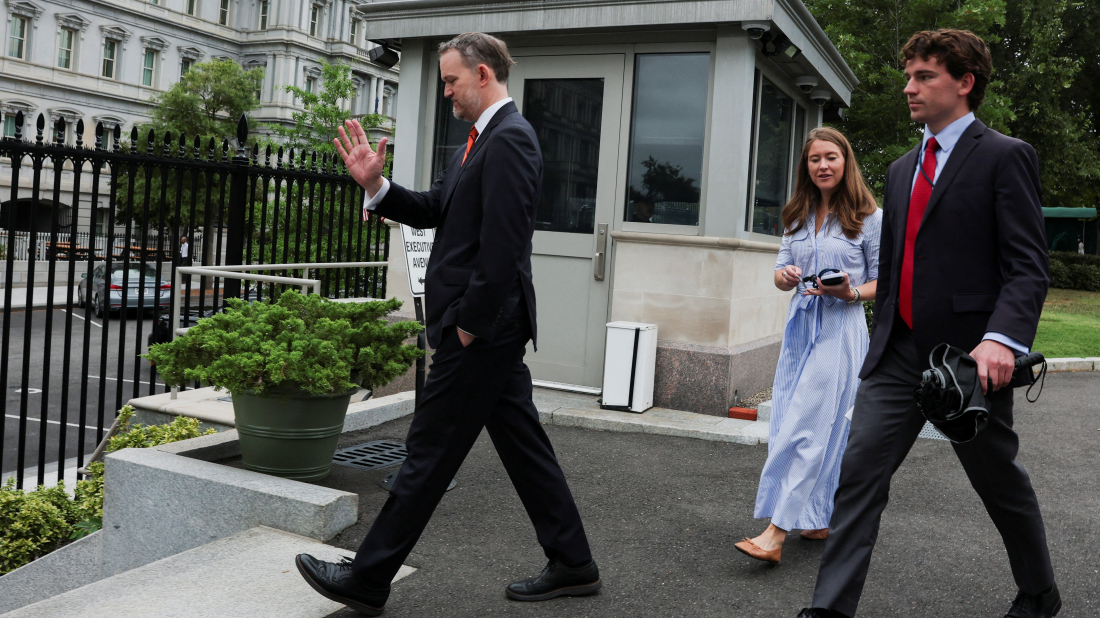Iran's government offers dialogue to protesters
Iran will seek dialogue with protest leaders after demonstrations in Tehran and other cities over a plunge in the currency's value that has accelerate...

The deadline to secure a new U.S. trade deal arrives today, potentially marking a turning point in the country’s economic strategy amid faltering momentum on global agreements and rising international tensions.
In April, President Donald Trump unveiled sweeping ‘Liberation Day’ tariffs, promising "90 deals in 90 days."
But four months later, the administration has only announced eight agreements — most of which remain vague in scope.
The shortfall has raised broader concerns about the direction of U.S. trade policy. If countries are not rushing to negotiate with Washington, the question emerges: where are they looking instead?
In Asia, regional powers are already charting a new course. South Korea, China, and Japan held their first economic dialogue in five years this April, aiming to strengthen regional trade ties as all three major exporters brace for the impact of U.S. tariffs.
At the same time, U.S. companies are scaling back operations in China.
A new survey from the US-China Business Council (USCBC) shows only 48% of U.S. firms plan to invest in China this year — a sharp decline from 80% in 2024.
The report points to a “steady decline in optimism about China’s economic prospects, alongside growing pessimism about any improvement in U.S.-China relations.”
In Africa, countries such as Uganda are responding by investing in more self-reliant economic models. Some governments also view the global uncertainty as a rare opportunity to push forward long-discussed plans for regional value chains — trade networks that could strengthen intra-African commerce.
South America is also adapting to the shifting landscape.
With the U.S. and China locked in a tit-for-tat tariff exchange, exporters like Brazil may step in to fill gaps. As one of the world’s top soybean producers, Brazil could expand agricultural exports to China, replacing diminished U.S. supplies.
Trump’s recent deal with the European Union offered a measure of stability. The agreement imposes a reduced 15% tariff on most EU goods and “stabilises relations between two economies that together account for nearly a third of global trade.” Still, the EU continues to pursue new partnerships with India, Indonesia, Malaysia, Thailand, and the Philippines.
As the trade deadline passes, the U.S. faces mounting pressure to clarify its strategy in a rapidly evolving global order.
Roman Abramovich, the Russian billionaire and former Chelsea Football Club owner, has assembled a “top tier” legal team, including a former White House advisor, as he prepares for a legal battle in Jersey.
Venezuelan President Nicolás Maduro on Sunday praised the country’s armed forces as “invincible warriors” during a year-end ceremony honouring the Bolivarian National Armed Forces, held in the coastal city of La Guaira.
Iran successfully launched three satellites on Sunday using a Russian Soyuz rocket from Russia’s Far East, marking the latest stage in growing Iran-Russia space cooperation.
Türkiye on Sunday denied reports that a Turkish Airlines passenger flight diverted from Libya due to fears of retaliation following a Libyan military delegation plane crash near Ankara.
Torrential rainfall across southern and eastern Spain over the weekend has left one person dead and two others missing, authorities said on Sunday evening, as overflowing riverbeds swept away vehicles and officials urged residents to stay indoors.
A technical incident occurred between the ASCO-owned tanker Kalbajar and the Turkish-flagged tanker Alatepe in waters off Istanbul, according to the Azerbaijan Caspian Shipping Closed Joint-Stock Company (ASCO).
Russian President Vladimir Putin held a meeting on the situation in Ukraine, during which he said Russian forces were making progress on several fronts, according to statements released by the Kremlin.
Latvia has completed construction of its border fence with Russia, marking a major step in strengthening national and EU external border security. Authorities say work will now focus on expanding surveillance technology and additional infrastructure along the eastern border.
The head of Yemen’s Presidential Council, Rashad al-Alimi, has ordered all forces linked to the United Arab Emirates to leave Yemen within 24 hours.
Start your day informed with AnewZ Morning Brief: here are the top news stories for the 30th of December, covering the latest developments you need to know.
You can download the AnewZ application from Play Store and the App Store.

What is your opinion on this topic?
Leave the first comment